
Shift Pointers
- Author: Wayne Colonna
- Subject Matter: U140
- Issue: No reverse or 4th
A 2002 Highlander 3.0L using the U140 transmission comes back to Pedro Seda’s shop in Puerto Rico. He had rebuilt it two years prior to its return where it had worked flawlessly during this time. Then, in an instant, it went from flawless to faulty. The transmission suddenly lost reverse and would no longer shift into fourth gear. When reverse was selected an engagement was felt yet the vehicle did not move in reverse.
Reference was then made to a component application chart to begin diagnosing the problem (Figure 1). The chart revealed the Direct/C2 clutch, the L-R/B3 brake and the UD/B3 brake are applied in reverse. For fourth gear the Forward/C1 clutch, the Direct/C2 clutch and the UD/C3 clutch are applied. So by a process of elimination it appears that the Direct/C2 clutch may be the problem.
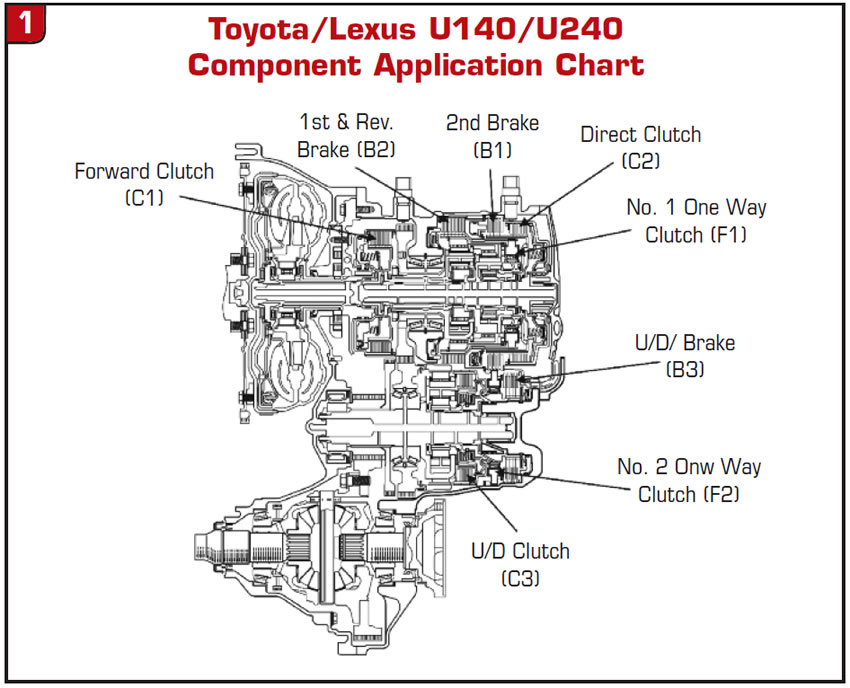
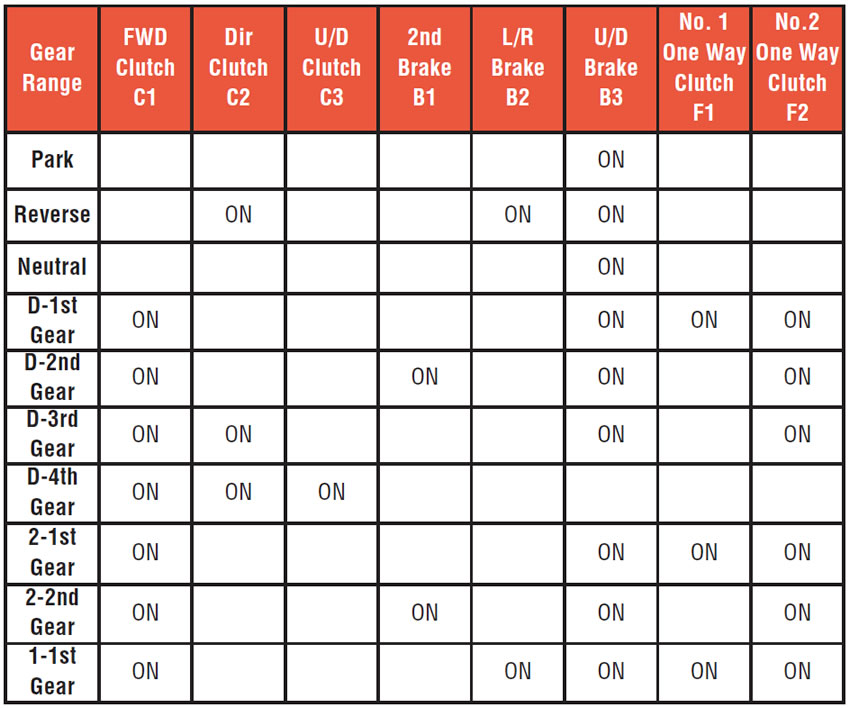

A pan inspection was then made. At first it was a big surprise to find that it was very clean, especially for it having been on the road for two years. But then, thinking about how the problem occurred so suddenly, rather than a typical C2 clutch burn out, something related to the clutch must have snapped, sheared off or broke.
Once the rear cover was pulled and the C2 clutch assembly removed, there was nothing obviously wrong.
The drum, shaft, clutch hub, clutches, piston, pipes, seals, rings and cover were all in “pristine” condition.
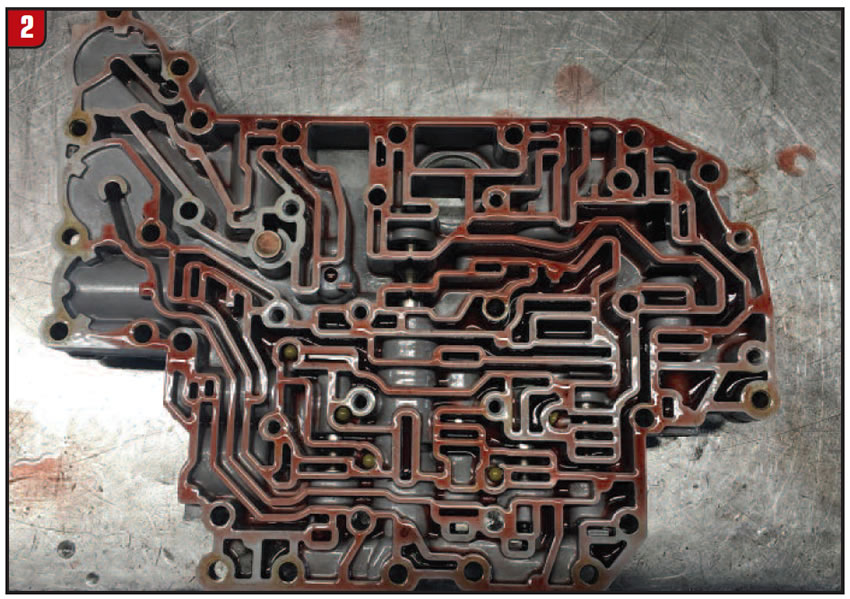
At this point the valve body was removed and disassembled. When looking into the lower valve body where the check balls are located (Figure 2), a check ball was found split in two (figures 3 and 4). So one would think “viola,” we found the problem. The only problem is, the hydraulics provided in ATSG’s Tech Guide shows this ball as only controlling the flow rate in and out of the UD/B3 brake clutch.
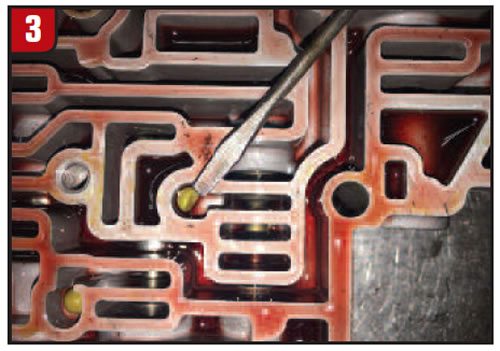
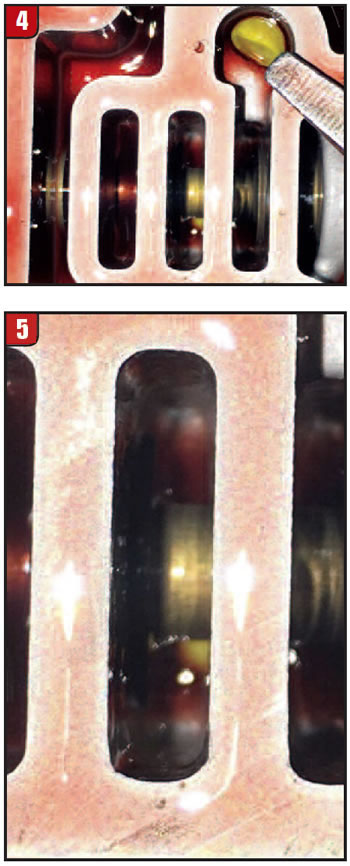
The question to ask now is where did the other half of the ball travel to? The valve where this ball sits along side of is the 3-4 shift valve. A closer look at this valve showed that the other half of this ball is wedged underneath that valve. This caused it to be stuck in a partially stroked position (Figure 5).
When this valve is held closed by spring tension it allows line pressure to be routed to this check ball.
From this check ball line pressure is directed to the B3 Clutch, B3 accumulator and the B3 orifice control valve. The valve was stuck in such a way that it blocked pressure to the B3 clutch, causing the no-reverse condition. The C2 clutch and the B2 brake applied which is why an engagement was felt, yet without the B3 brake there is no reverse movement.

The question that should be asked now is, if the B3 clutches are not applying, how is it that it moves forward yet has no fourth gear?
Two reasons will satisfy this question:
- The B3 clutches are not necessary for it to move forward as the number 2 one-way-clutch will hold the UD planetary sun gear from turning clockwise. The B3 also holds the UD planetary sun gear from turning clockwise but also prevents it from turning counterclockwise.
This will provide engine braking during lift foot deceleration. - When the selector lever is placed into drive, additional line pressure is sent to the 3-4 shift valve and is blocked at the valve when it is held closed by spring tension. This valve remains closed for first, second and third gears. When it is stroked to make the 3-4 shift, this additional line pressure is then routed to the UD/C3 clutch for fourth gear. The 3-4 shift valve was jammed by the half ball in such a way that it blocked this pressure from applying the C3 clutch.
In conclusion, Pedro Seda was a victim of “double jeopardy.” A split ball jammed one valve causing two different problems.














